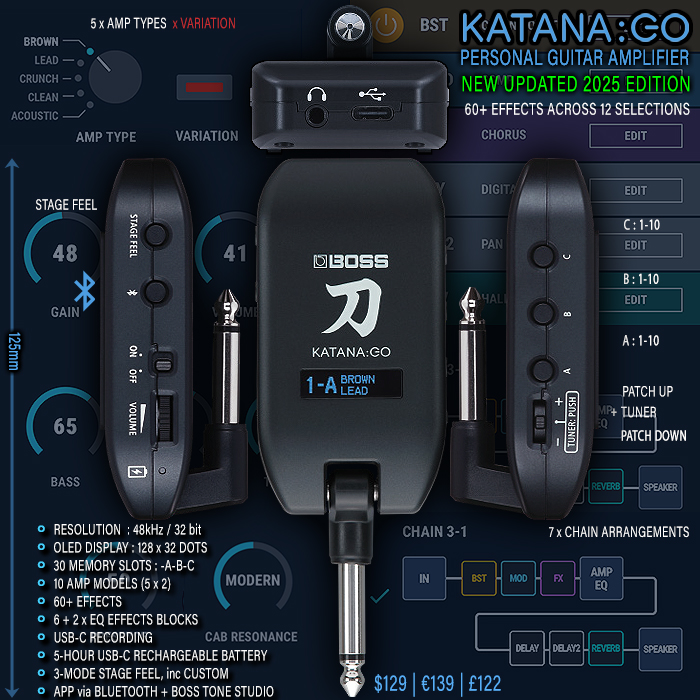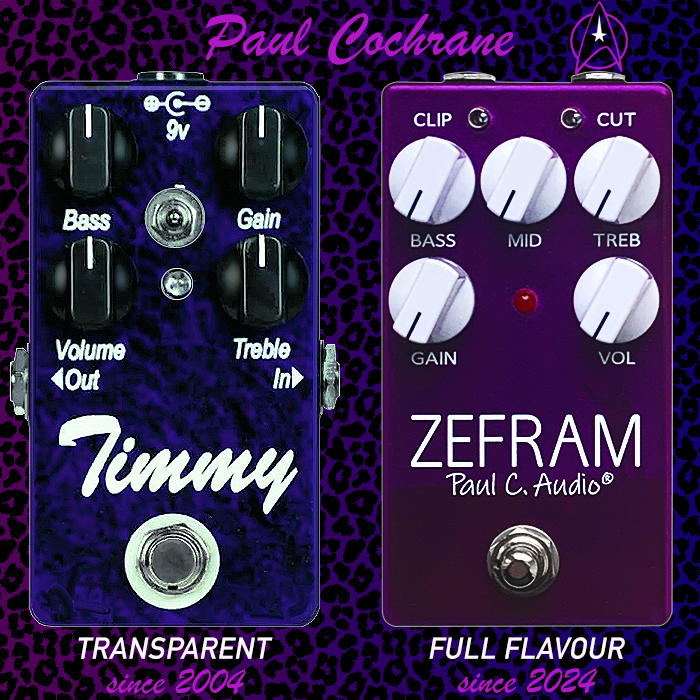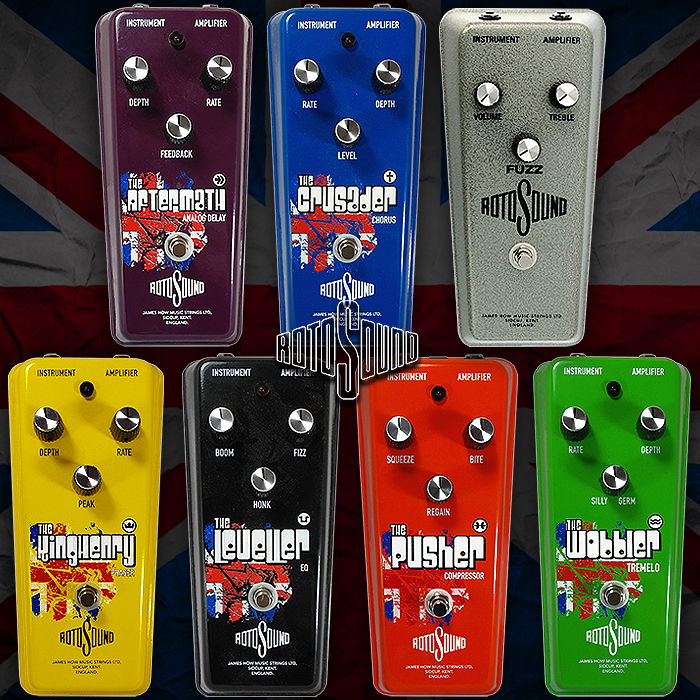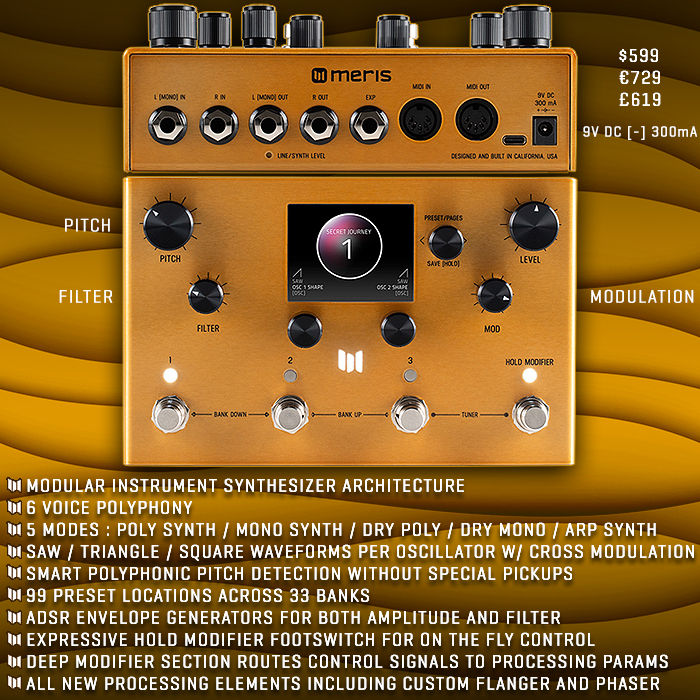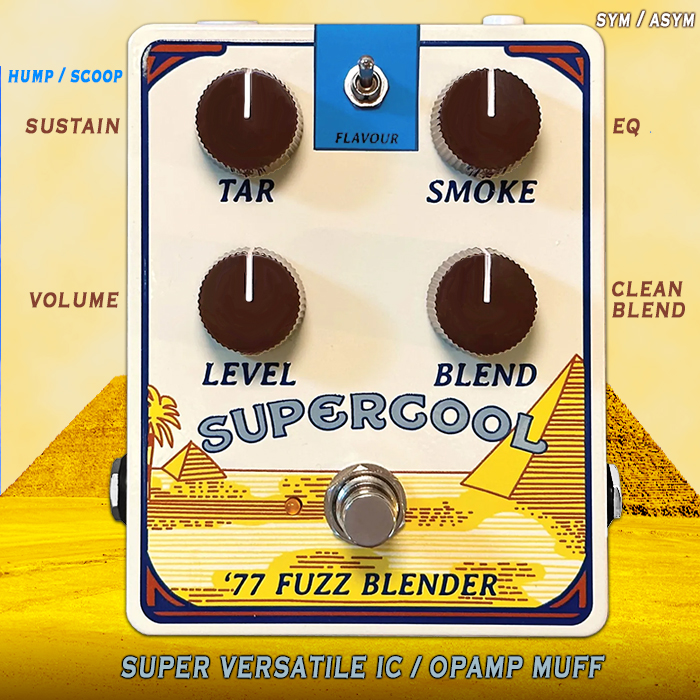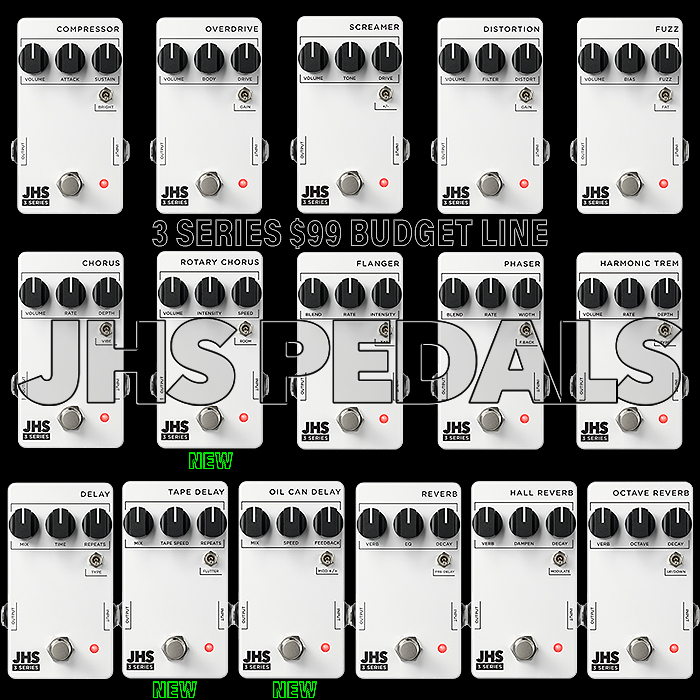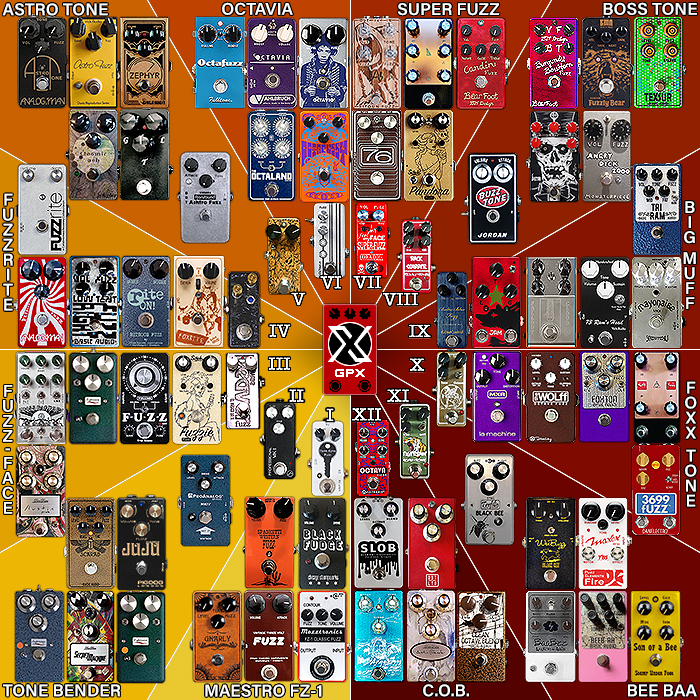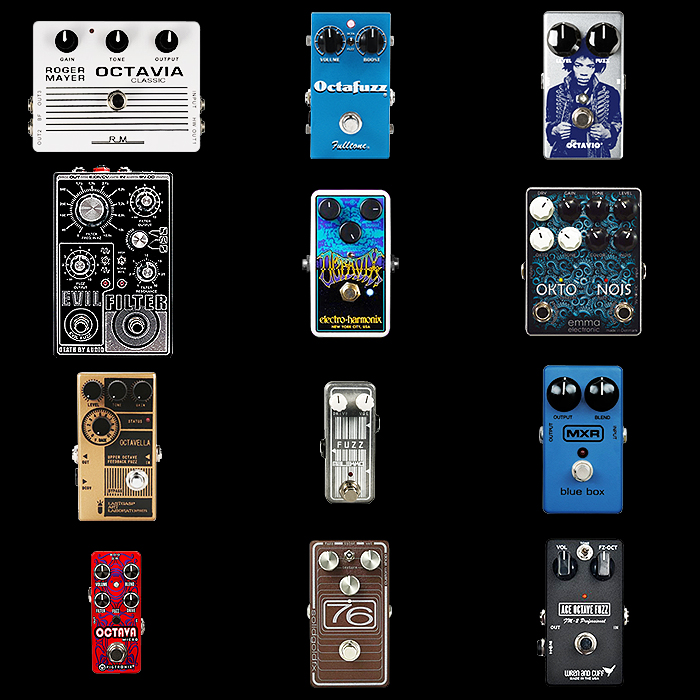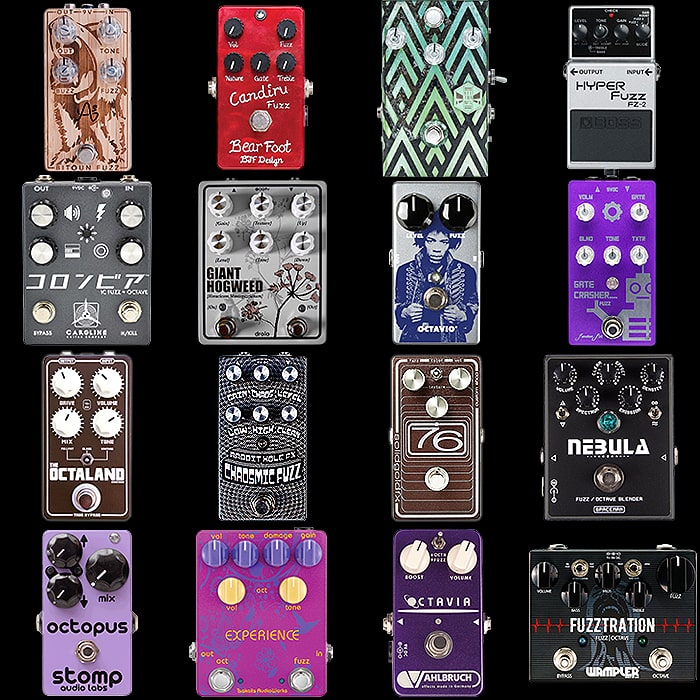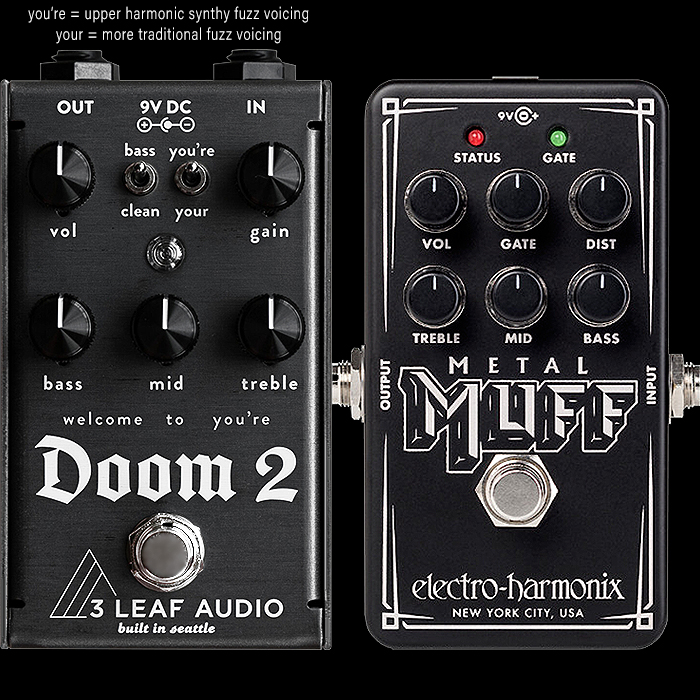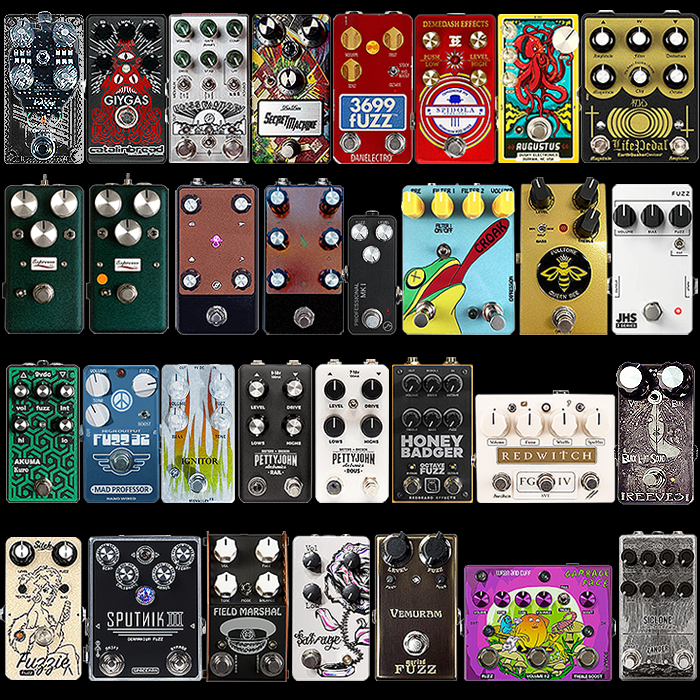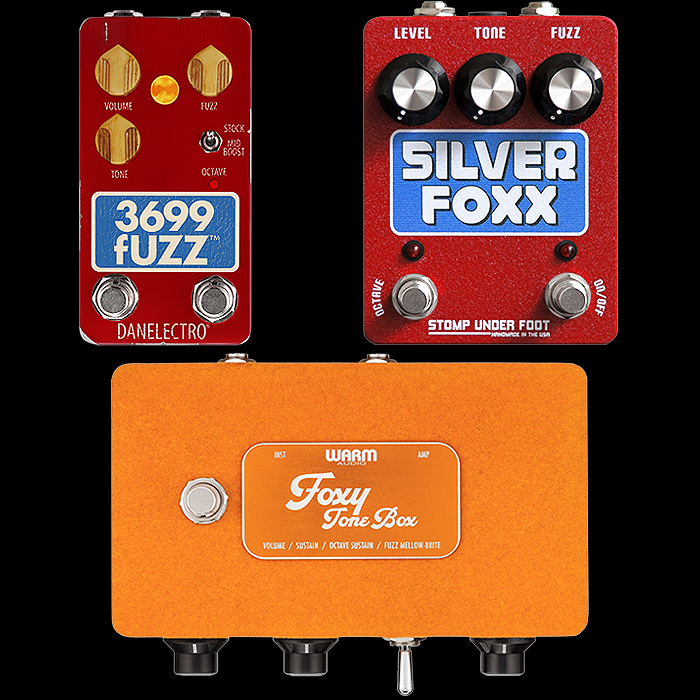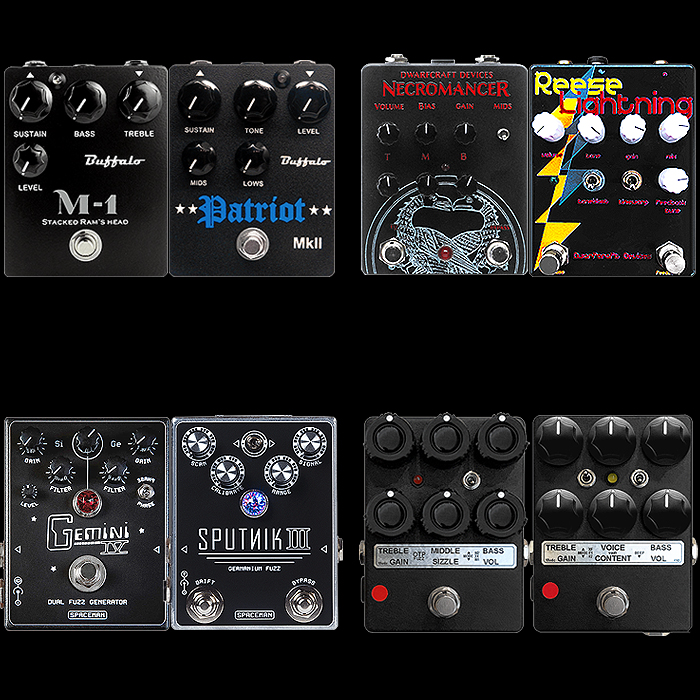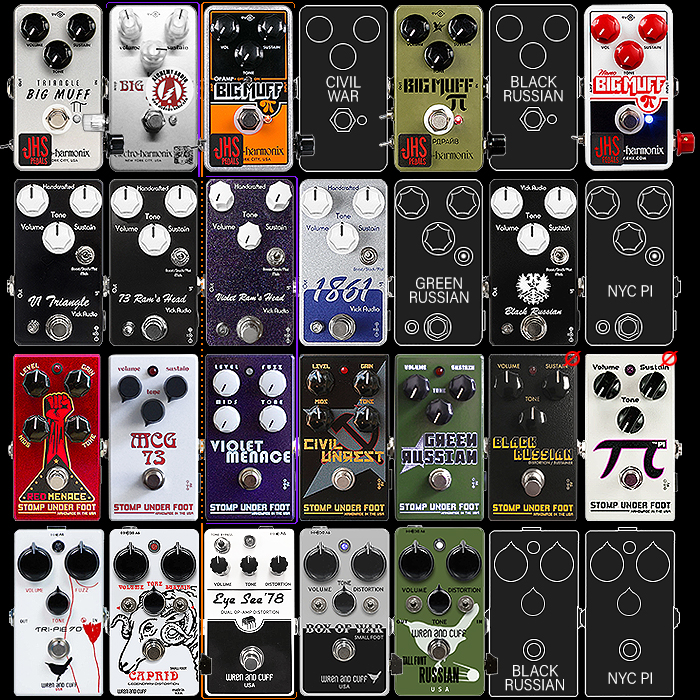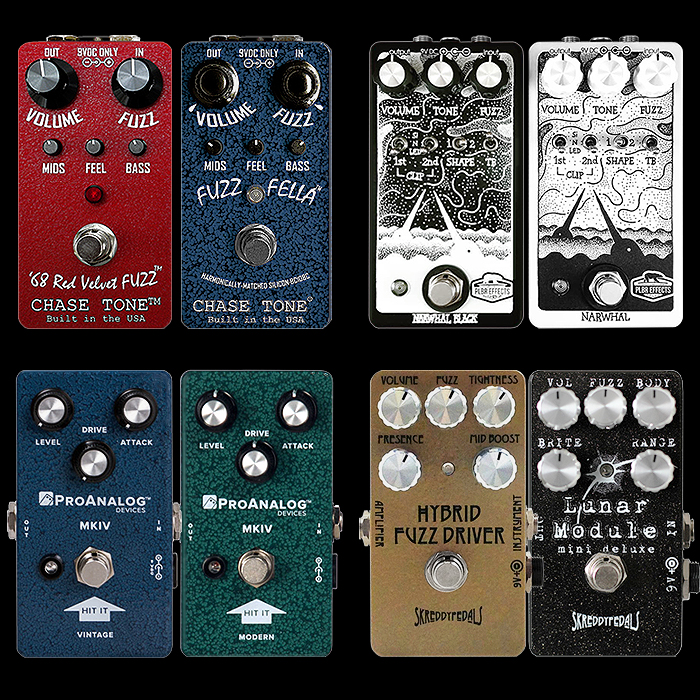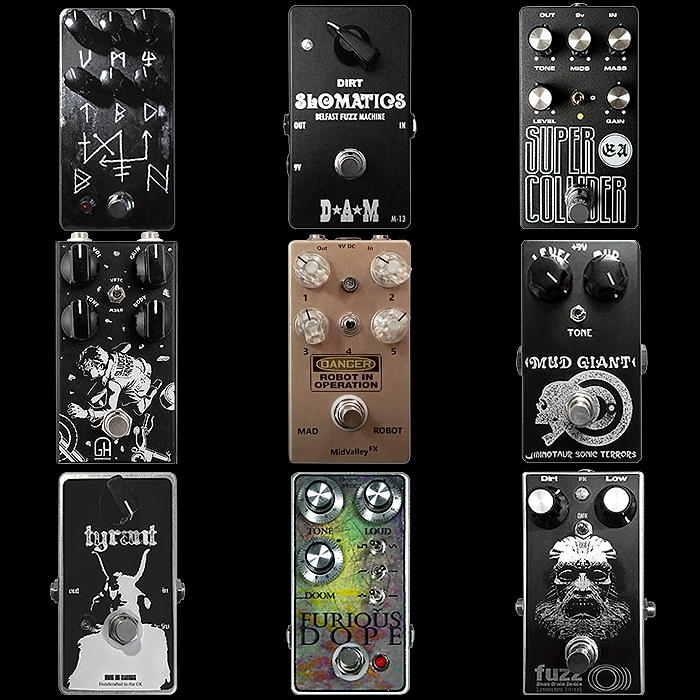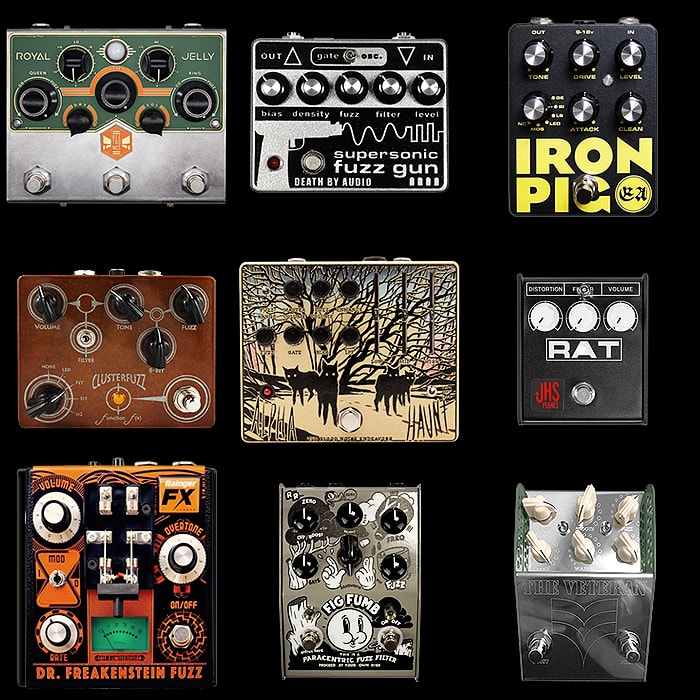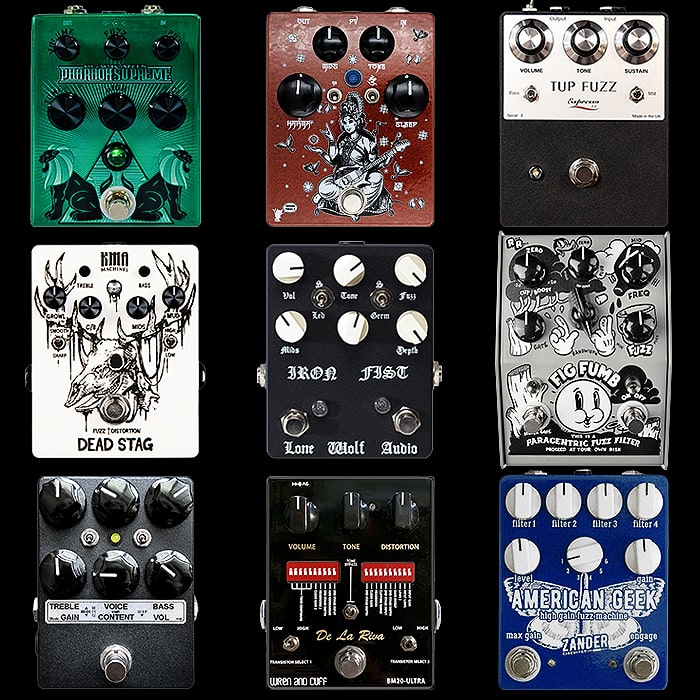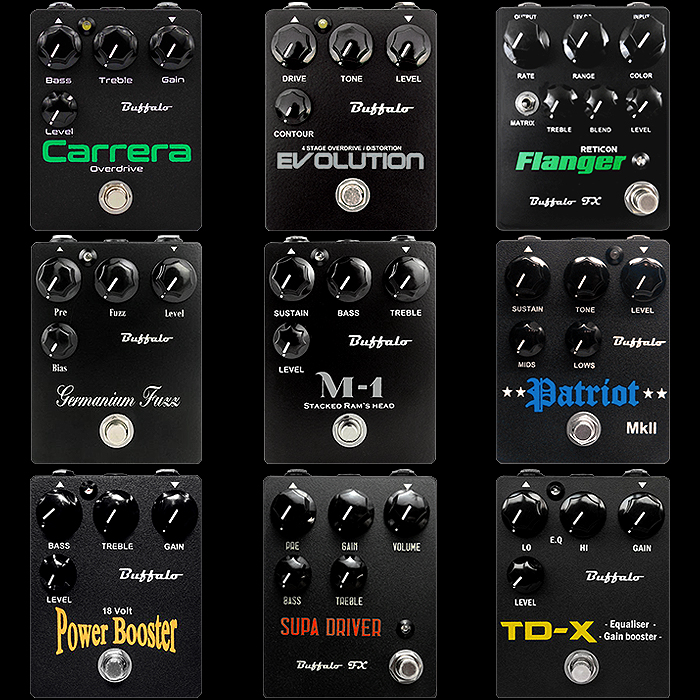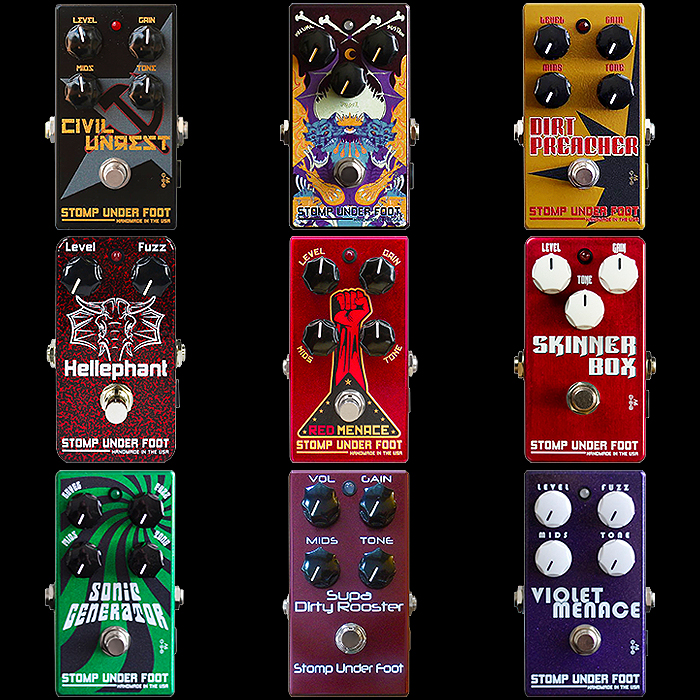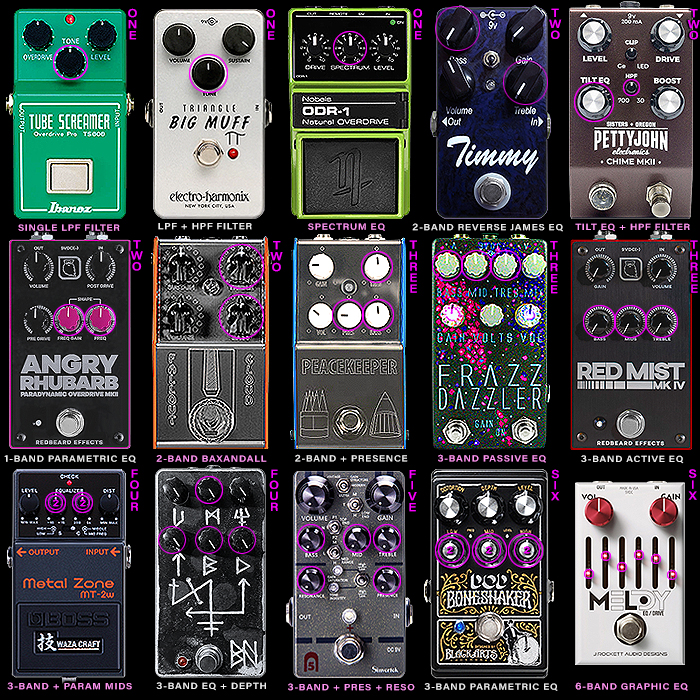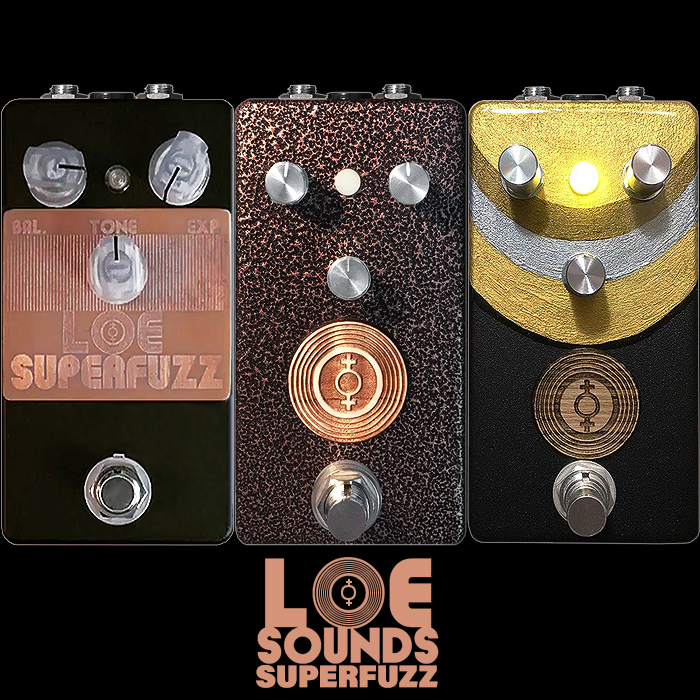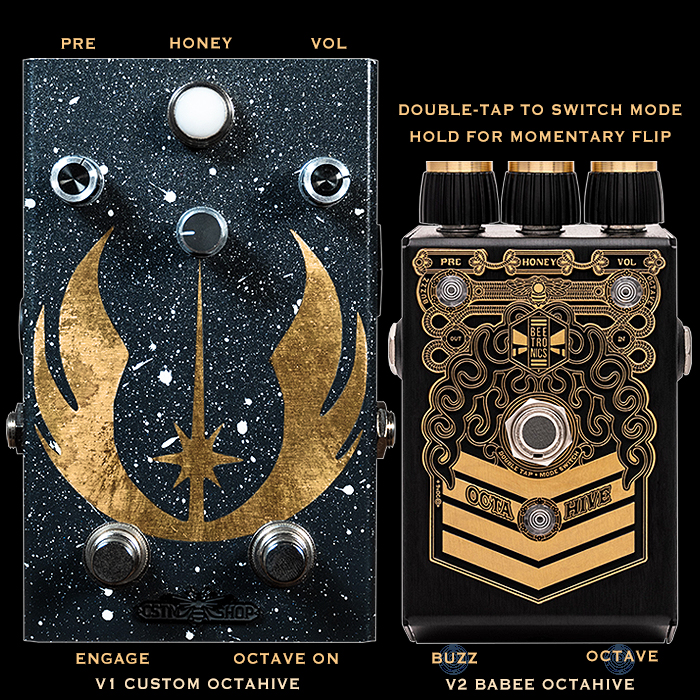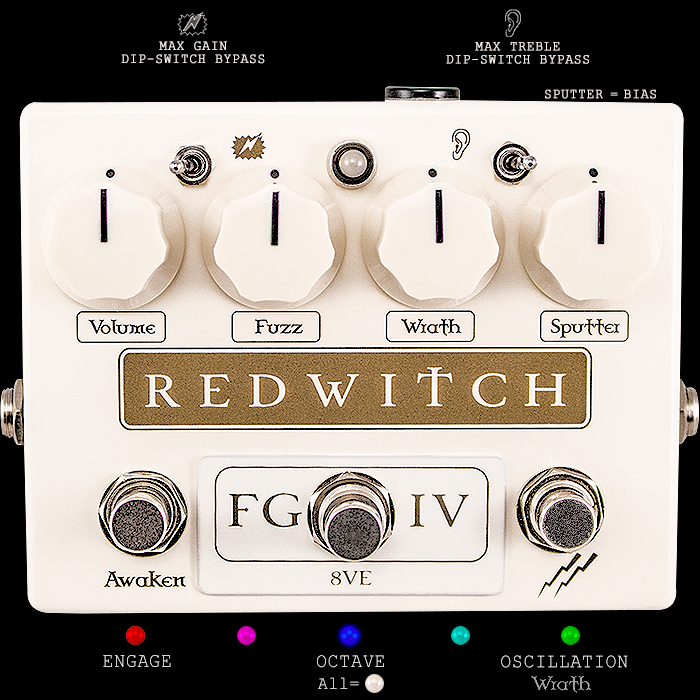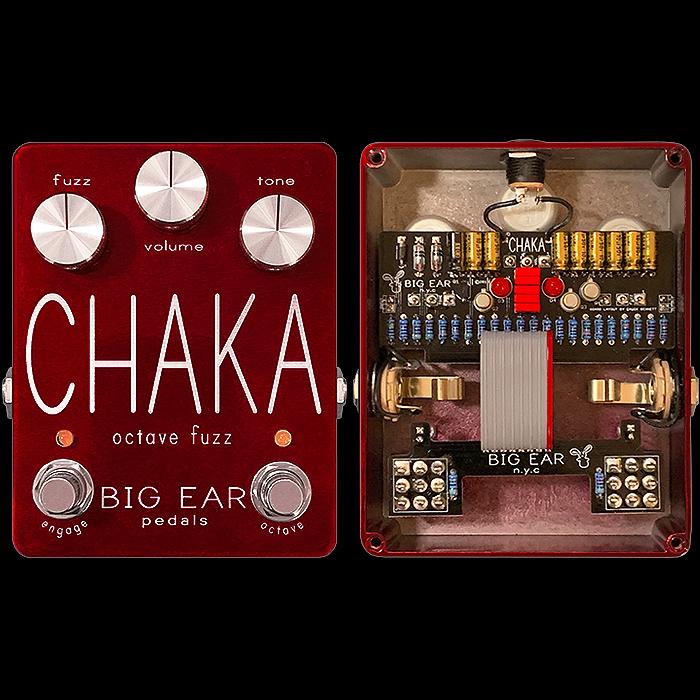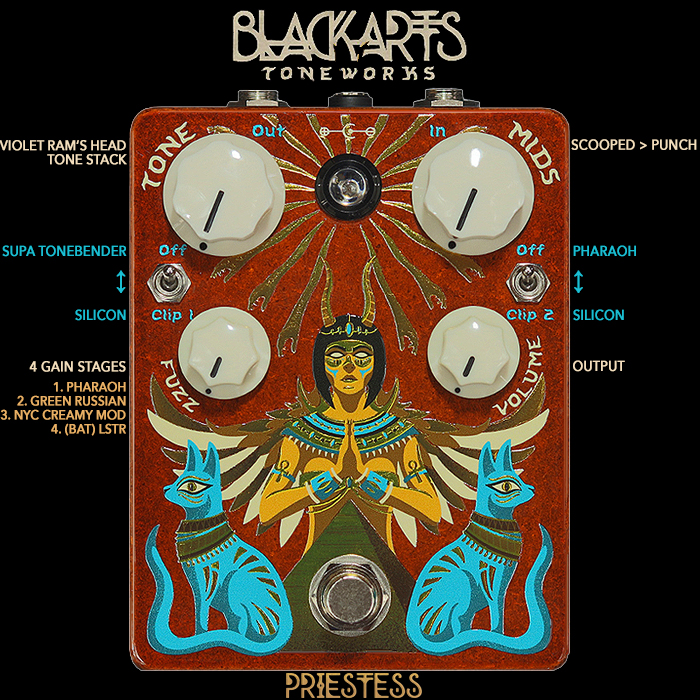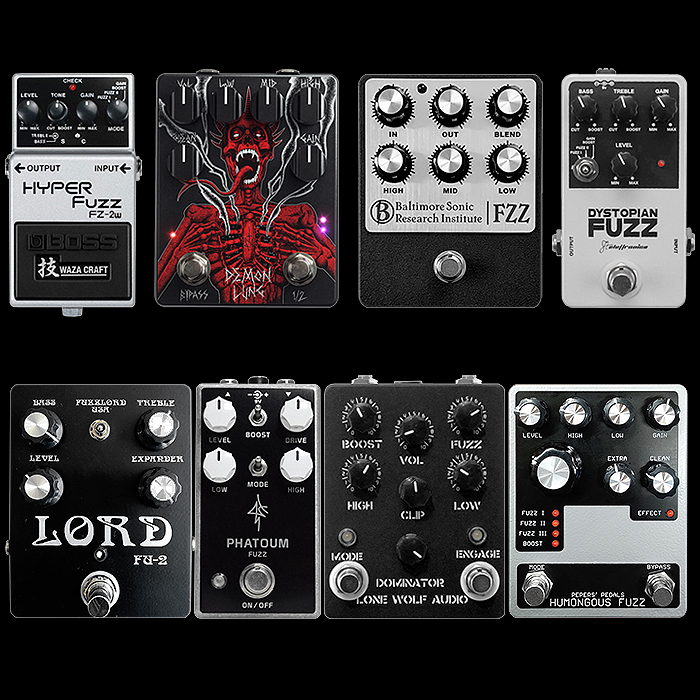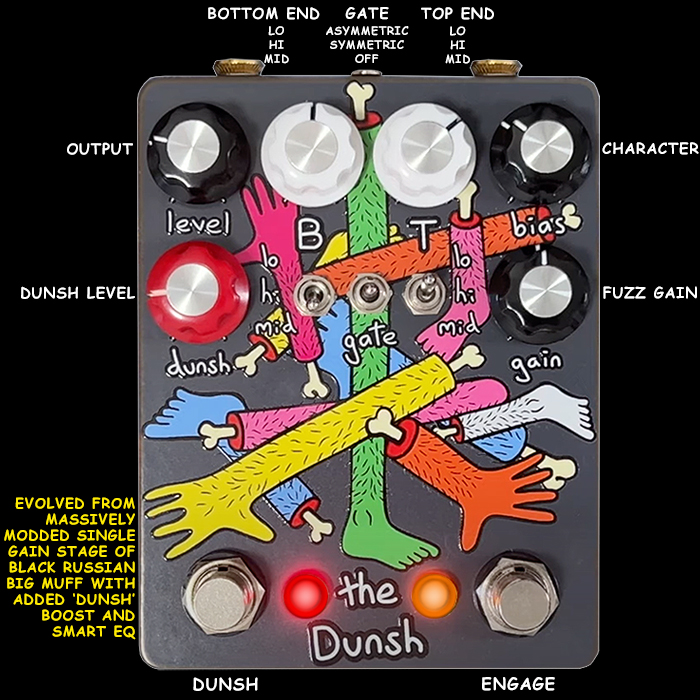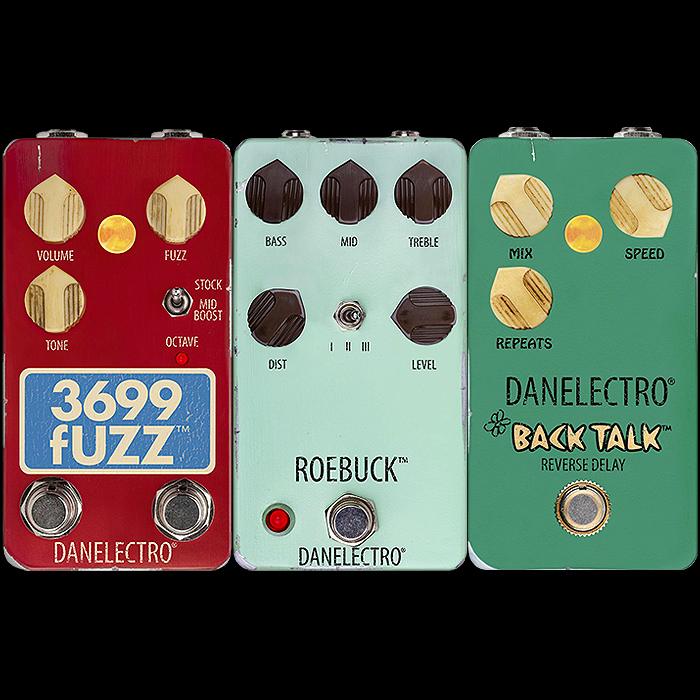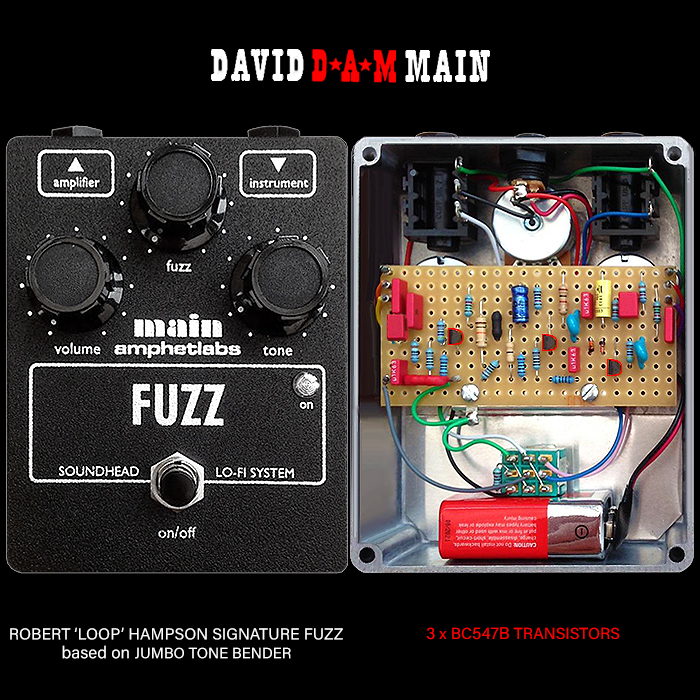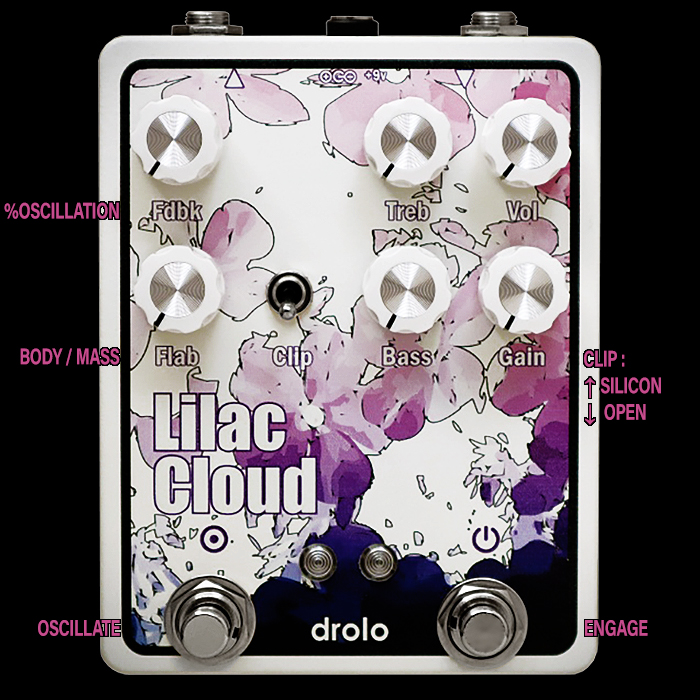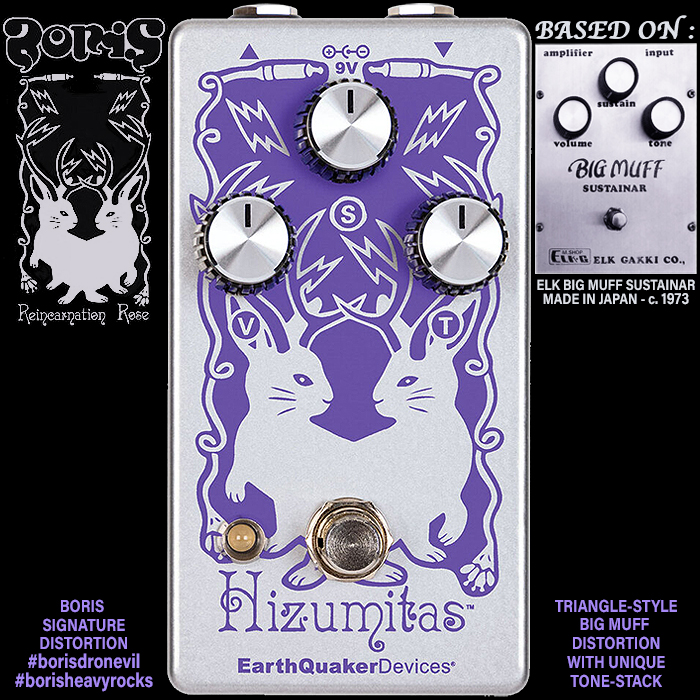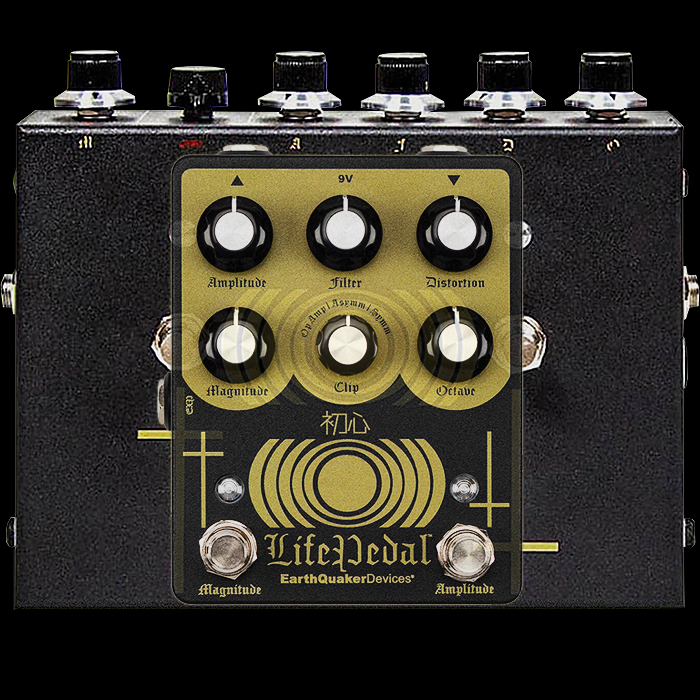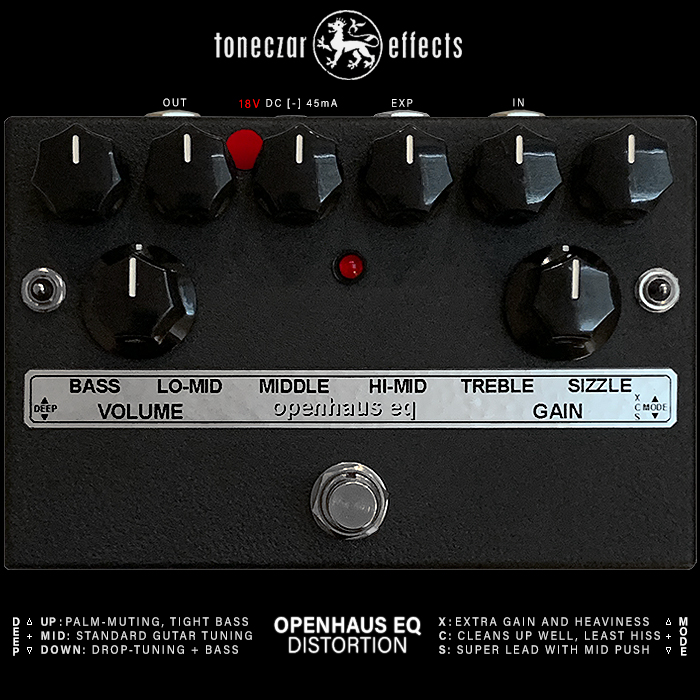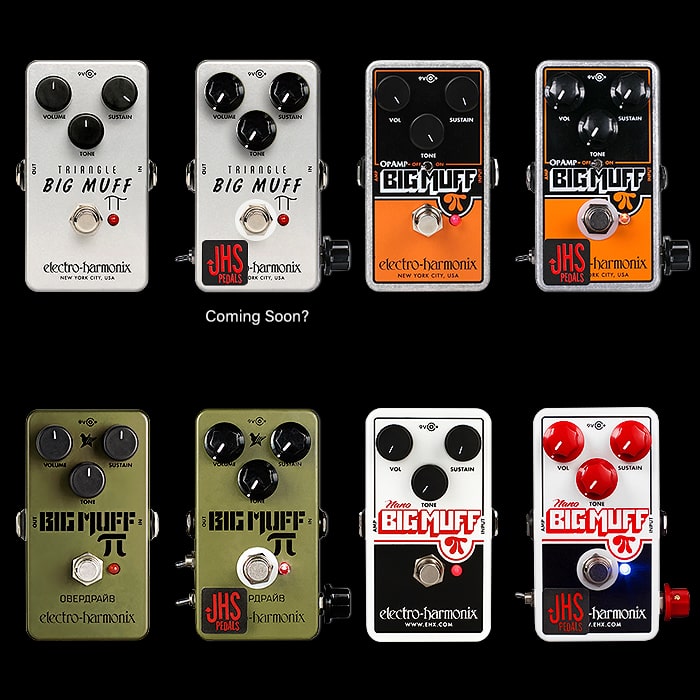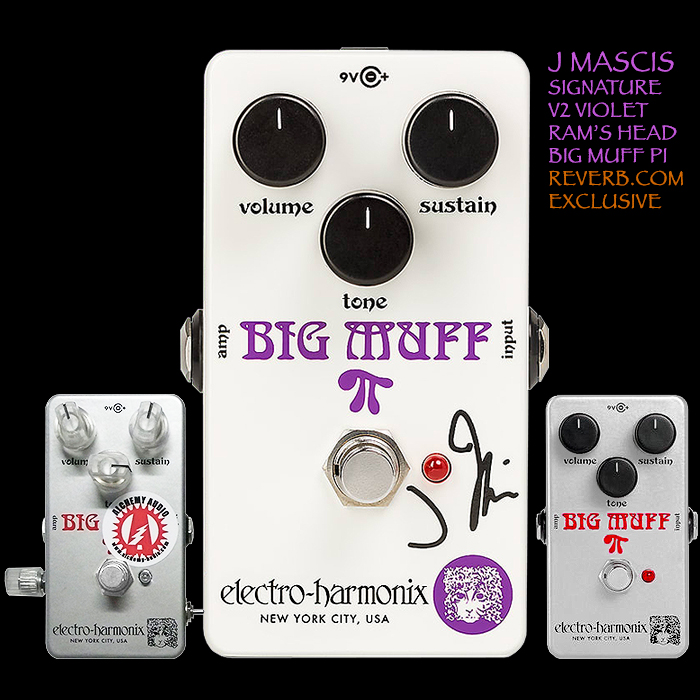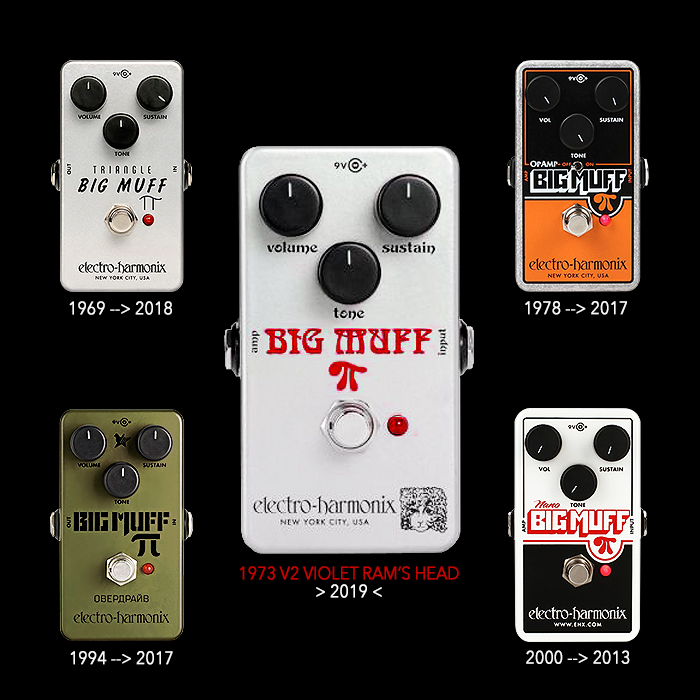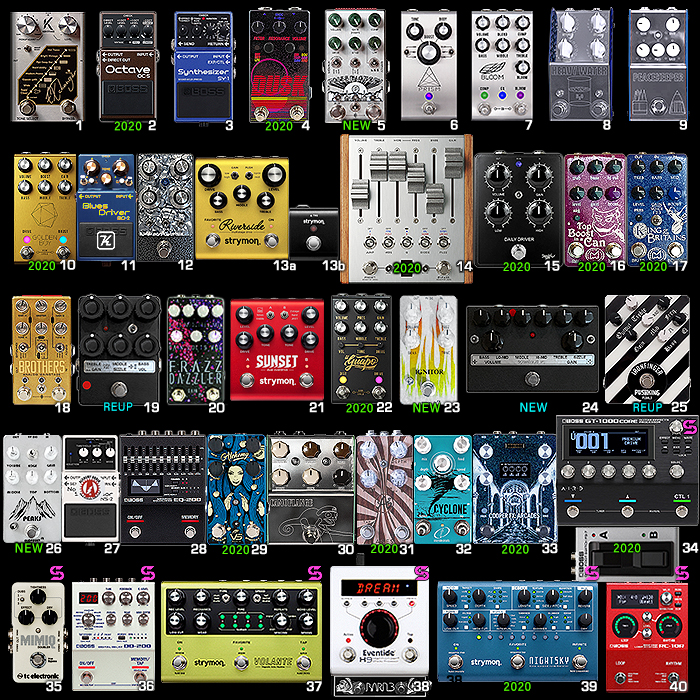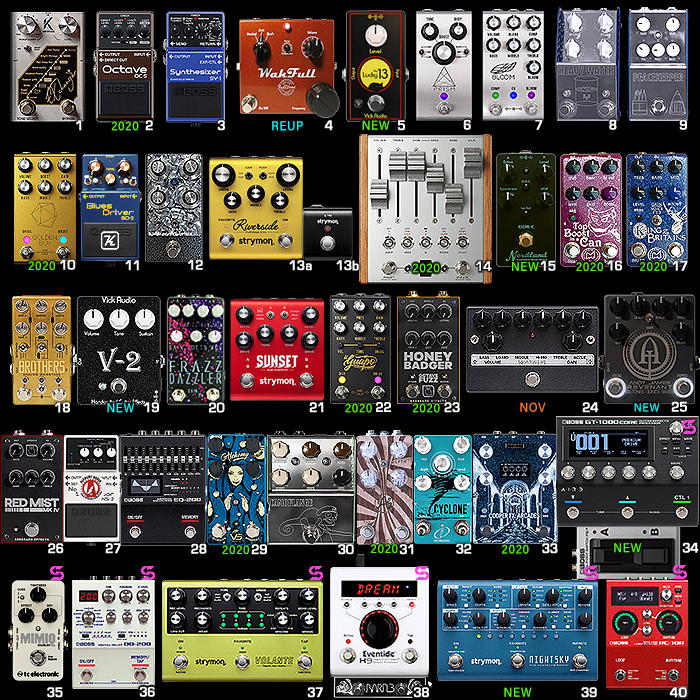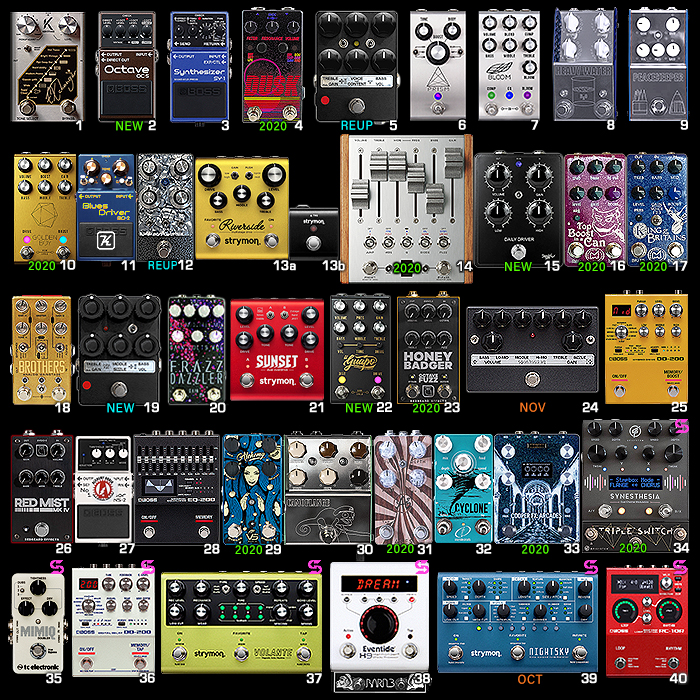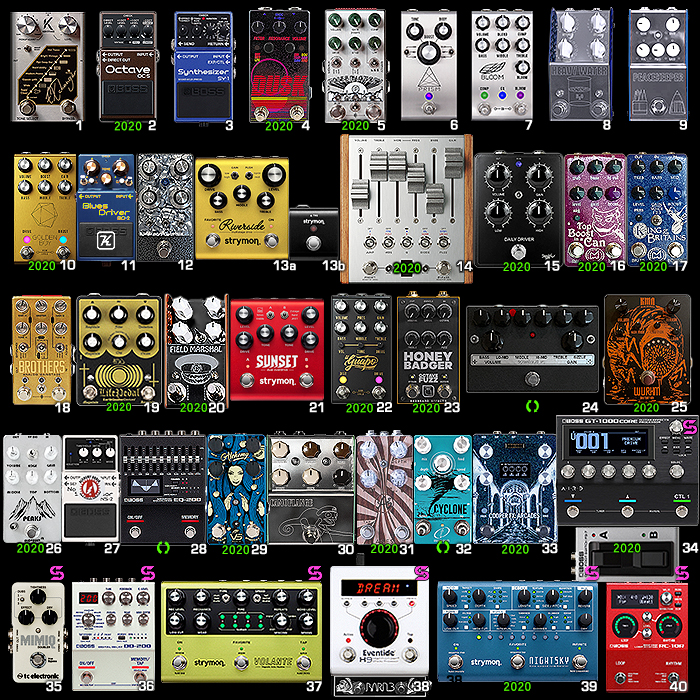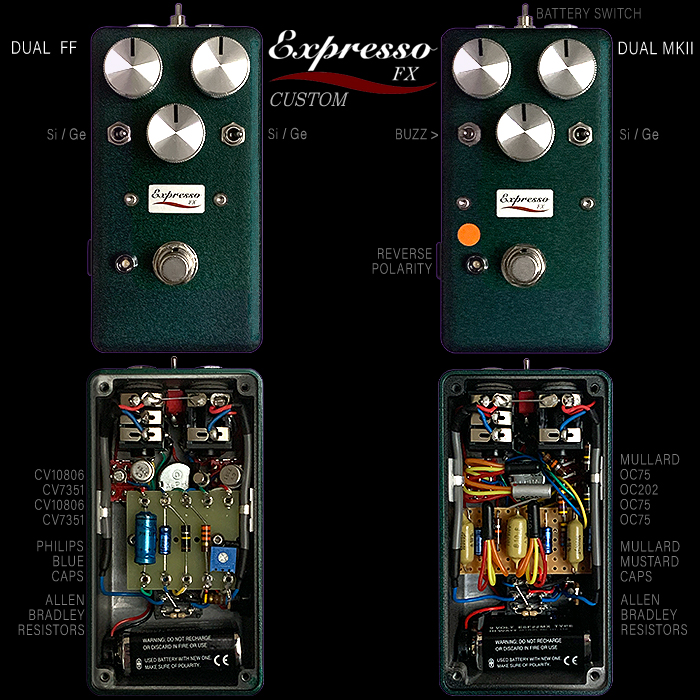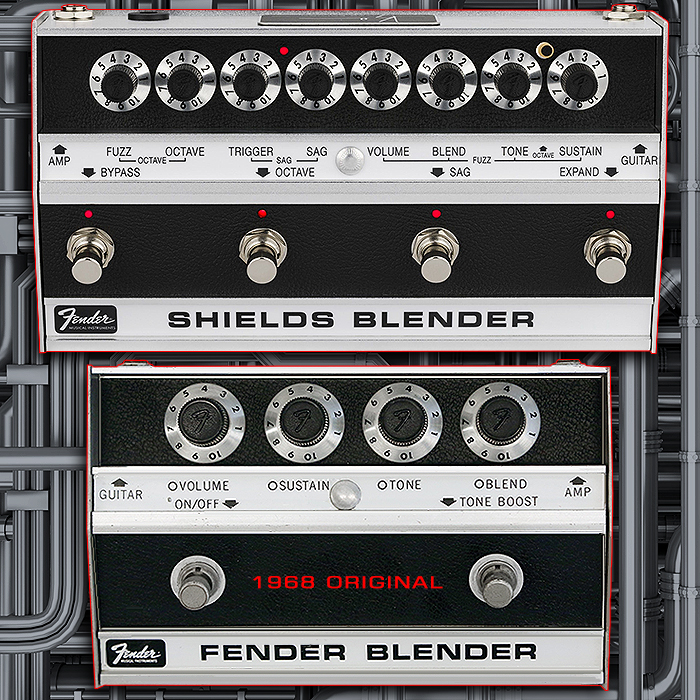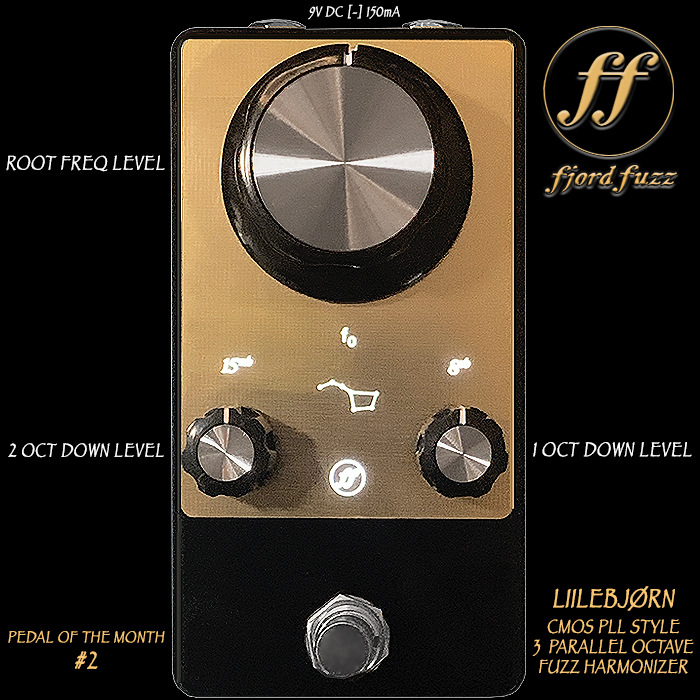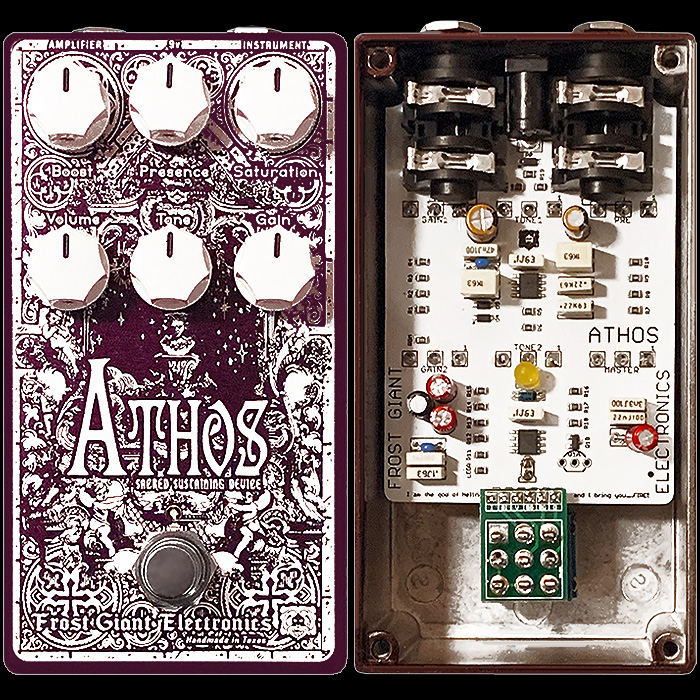Toneczar Ed Rembold's Two Essential Secret Weapon Extended-Range Fuzzes - the OTP and Vault
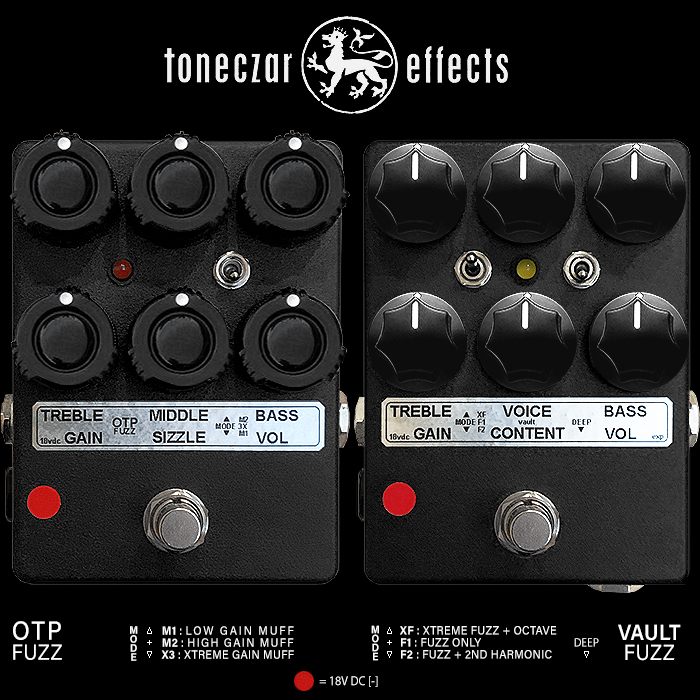
My introduction to Toneczar was courtesy of another somewhat underground legend - one Dennis Kayzer of Hamburg - who demo’d a lot of Ed’s pedals a good 7-10 years ago. I of course only came across those rather more recently - or some 4/5 years ago actually - where I developed a fondness for the Openhaus High Gain Distortion and Vault High Gain Fuzz in particular. I’m not 100% clear on the provenance of the Openhaus in terms of which thundering high gain amp tones its development was focused towards, while the Vault is somewhat adjacent to the Shin-Ei FY-2 and FY-6 Fuzzes - while really being its own thing with its own distinct voicings and a host of options and configurability.
So my thinking evolved that I would quite like to acquire a set of Ed’s BB-style enclosures, which actually turned out to be the slightly more compact 1590S boxes (82 mm x 110 mm x 40 mm). At that stage I was thinking that the set would comprise of Dove Overdrive + Openhaus Distortion + Vault Fuzz.
I was under the misapprehension then that Ed’s waiting lists were still at least a year long or more, and I determined to acquire those pedals in a more opportunistic fashion - waiting for pristine examples to turn up on Reverb.com. My patience was rewarded in March of last year when my Reverb Feed picked up on a pristine Vault being offered in Auckland New Zealand - that is the one pictured top-right above!
I can’t explain exactly why - probably to do with my trying to keep track of some 500 pedal brands at the same time - but it was only actually relatively recently that I realised that the waiting list constraints were no longer in place for most of Ed’s pedals - with the exception of the still very-highly-in-demand Echoczar BBD Delay. In fact Ed had taken to posting regular updates on his homepage as to what was more readily available for that particular period.
I had seen quite a few demos of the then relatively recent OTP BMP-style fuzz - which made me extend my Toneczar wishlist to Dove + Openhaus + OTP + Vault. Of course being the fuzz fan I am - there was no question that I would look to secure the 2 Toneczar Fuzzes first - and I was further triggered during research for my recent Joe’s Pedals feature that Joe Light himself had one of the OTP’s so I of course had to order one too - and that turned up just over a week later - yesterday in fact!
Another thing I had failed to notice was that the previous 5-knob Openhaus 1590S format had been replaced by a considerably larger 8-knob 6-Band Active EQ 1590J format - so 145 mm x 95 mm x 45 mm vs or roughly an inch / 25mm wider than a horizontal BB enclosure and slightly deeper too - but similar height. Ed explained to me that said format was the exact vision and goal he had first had, it just took him a while to perfect the circuit and get the noise floor level just right - which he has finally achieved with his latest Openhaus EQ edition. This was obviously going to scupper my set of 4 same-size units - but after much deliberation I decided that the version of the Openhaus I should be getting is most definitely the newer one - while part of me still want to snap up one of the smaller ones if and when the right example pops up (as a collector’s bonus!). I have though determined that I will be acquiring an Openhaus EQ in November - as I’ve already committed to a Strymon NightSky for next month.
So I should be adding an Openhaus in November, and then I will look to complete the set as it were in the early months of next year. In fact right now actually is a good time for acquiring Toneczar pedals as Ed for the very first time is offering a progressive discount of $75 for additional pedals you add to your order. I am aware that this is still a lofty target for many - as Ed’s pedals pretty much start at around $395 for Black editions, $495 for Polished editions - while the Echoczar is $725/$875 and more still if you add the essential AngelBaby add on at $285/$385. Note that while polished boxes are prettier in some ways - they are susceptible to tarnishing and scuffing and thus require a lot more maintenance and get roughed up far more easily. All essential details can be found on Ed’s Toneczar Website.
OTP 'On-the-Pipe' BMP Style 4-Band Active EQ Fuzz - $395 for Black Edition, $495 for Polished Edition
Firstly 'On-the-Pipe' is a MotoSport term for 'max power band' meaning the range of RPM where the engine is putting out its max torque/power! This is particularly apt here as it totally meshes in line with the OTP's 3 Gain Modes - which are all about power and control :
- M1 = (Muff one) this is the low gain mode, it still doesn’t really clean up, but it will get to a tweed deluxe sort-of grind with guitar volume on 2
- M2 = (Muff two) this is the high gain mode, never cleans up, but for such a wall-of-sound, it has great clarity.
- X3 = (eXtra three) this is the highest gain mode, features an extra gain-bump in the top end, and biases the transistors near cut-off, so when you stop playing and/or turn your guitar volume to zero, you get silence. (handy for both live playing and recording).
The 6 knobs themselves could not be easier to manipulate - they all have smooth and logical tapers and you know at all times what you're going to get out of them. Also even with the Gain totally maxed out on X3 it doesn't take you into speaker shredding territory but maintains a relatively even musicality. All 3 modes are highly usable for me and give you the ultimate coverage from the smoothest Black Russian tones on M1 to the most aggressive Triangle style tones on M2 and X3 - and everything in between. This is actually a really beatifully calibrated pedal and actually quite refined in most ways - in particular in comparison to the slightly more rawer and wirier sounding Vault q.v.
- Treble = High Frequencies Active Control
- Middle = Middle Frequencies Active Control
- Bass = Low Frequencies Active Control
- Gain = Transistor Gain / Saturation / Sustain
- Sizzle = Highest Frequencies Active Control / Presence
- Volume = Output Level
The 4 transistors in the OTP are pretty unique in being High hFE value Germanium variants or in advance of 200 hFE - and I guess a lot of the refined nature fo the sustain tail and saturation is down to that choice of transistors.
I have 50+ BMP style fuzzes in my collection and this is one of the very best, if not The best amongst all of them - I have others which are slightly more brutal - but none which are quite as versatile and broadly musical as this. For sure it's a pricey variety - but it's one of the very best BMP style fuzzes there ever was - were you only to buy one BMP - this would surely be that!
Note that there is currently only one guitar demo of the OTP Fuzz - Ed has a policy of not sponsoring demos per se - which means they are rather few and far between and not always of the very best quality - either in terms of the clarity of sound production or the nature of the demo itself. While the above demo by MrExcane is actually pretty decent - although the sound quality good be clearer.
Oh - and the red dot stickers on the pedals are my own system where Red Dot denotes 18V, Yellow Dot denotes 12V, and Orange Dot denotes Reverse Polarity - which you will have seen most recently on my Expresso FX Custom pedals. Needless to say I have had 'power issues' with pedals in the past! and hence the system of visual alerts. This is largely because I chose and change these so frequently - that it's necessary to have key visual markers to avoid plugging a higher voltage supply into a pedal which can't take it!
Vault High-Gain Over-the-Top 'Super' Fuzz - $395 for Black Edition, $495 for Polished Edition
I detailed in the intro above how exactly I came about acquiring this fuzz. What I failed to mention was that I have recently been on a sort of Pete Cornish sound-alike mission - in acquiring pedals which most closely matched Pete's legendary and even typically more pricey pedals which are usually in the £600/$765 range - they actually used to be closer to $800 but the pound is evidently on the way down!
In fact I was thinking of P-1,P-2 and NG-3 at the time - and that was somehow another catalyst towards my acquiring the OTP. While I've actually discovered a lot more recently that of all the fuzzes I own - it's a certain tuning of the Vault which gets me closest to to the speaker-shredding prowess of the NG-3.
I just knew I loved the sound of this pedal when I heard the various Dennis Kayzer demos - its controls are somewhat different to the OTP's 4-Band Active EQ - where here you have the core 'Voice' Tone Control - and the Treble and Bass knobs refine the High and Low end in tandem with whatever tonality you have set on Voice - an almost as equally effective and powerful EQ :
- Treble = Fine Tune Treble Control - Extends the Treble range of the Voice knob
- Voice = Core Tone Control - covers the range from Upper Bass to Low Treble; full CCW is deep and smooth, full CW is more cutting and wiry - without being brittle
- Bass = Powerful Fine Tune Bass Control - Extends the Bass range of the Voice knob
- Fuzz Mode Toggle = Sets Type / Character of Fuzz
- XF = eXtreme Fuzz plus Octave-Up
- F1 = Fuzz Only - NO Octave-Up
- F2 = Fuzz plus 2nd Harmonic Distortion
- Deep Toggle Switch = Sets Bass knob range - up for Standard Tuning Guitar, Down for Bass or Baritone Guitar. NOTE that mine is a slightly older model of Vault, and while the circuit remains the same the switch is renamed to Range on the latest editions - as pertains to overall tonal range of 'Voice' control.
- Gain = Transistor Gain - Low Gain / Low Guitar Volume results in some grit in tone, at Max Gain feedback and/or oscillation is likely
- Content = Sets the Harmonic Content Level for each Fuzz Mode
- XF = Octave-Up Level
- F1 = Fuzz Level
- F2 = 2nd Harmonic Distortion Level
- Volume = Output Level, Unity Gain is circa 11 o'c
The Vault also has an Expression Jack for expression pedal control of the 'Content' Control.
What is remarkable about the Vault is how wide-ranging it is - and how relatively easily you can sort of smooth it out and get into adjacent BMP-style territory, but then adjust a couple of dials and it's fully searing and strident.
You can get a lot of fuzz density with this pedal - and like I said it's the closest for me to getting to that character of the PC NG-3 that I'm aware of. Overall the Vault has a few more tones and textures onboard comparatively versus the OTP - where that sticks very much true to its BMP roots - but with those extended refinements gained from those very special Germanium Transistors and 4-band active EQ.
Final Thoughts
I know the first question my readers will ask is - if I could only have one, which one would be my preference - and while that's a really difficult internal debate, I believe I would eventually come down in favour of the Vault. That is the first one I acquired and I feel I got them in the right order - as the Vault is a little more Unique and textured in and of itself - while the OTP is the very best all-rounder BMP style fuzz you could hope to get your hands on. They are so very different in nature - while you can get a tiny bit of overlap from the Vault if you calibrate the dials ever so carefully.
What is beyond any doubt though is that these are very much superior tone machines - and some of the very finest of their type - and of course hand-made using the very finest components throughout. Ed has also spent an inordinate amount of time engineering the noise floor on all his pedals to be as quiet as they can be. For such high gain fuzz pedals it's incredible quite how little superfluous noise is generated by either pedal.
I don't see how anyone could be dissatisfied with either choice - and I'm not sure why the Gentleman form Auckland let his Vault go. I really could not be more pleased with the pair of these - they fulfil every expectation - they are both immensely versatile and wide in scope within their domains - and effortlessly easy and largely predictable in use.
Those who love Big Muffs will obviously more likely leap on the OTP - while those who like slightly more aggressive and textural fuzz sounds will gravitate towards the Vault. Each is very much its own thing - and there's no reason if you have the means not to acquire both. Save up if you have to - each one is worth several fuzzes in terms of tonal range and overall coverage - the Vault had not been in my current rotation for a while until today (so many new pedals this year), and I'd forgotten just how amazing it sounds - and the OTP is every bit its equal in its own category.
By all means you should hit up Ed Rembold courtesy of his Toneczar Website - or you can send him an email intuiry direct to ed@toneczareffects.com . Happy hunting!







